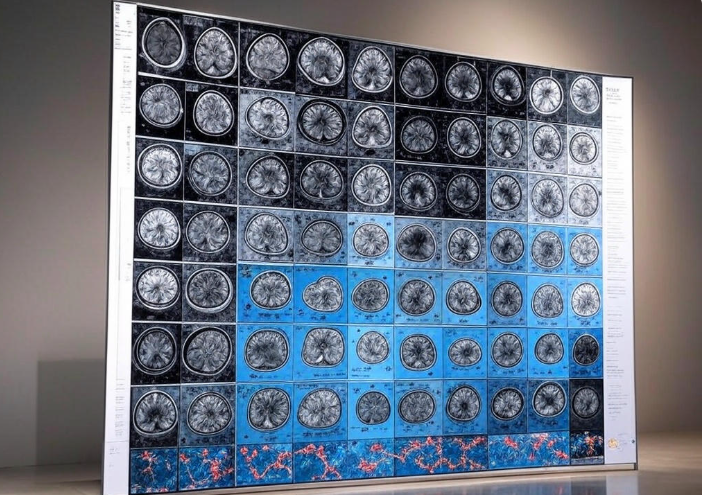Introduction
ArcMap 10.8.2 is a legacy GIS application within ArcGIS Desktop, widely used for mapping and spatial analysis despite its planned retirement in March 2026. This tutorial will walk you through setting up a project, working with spatial data, conducting a simple analysis, and producing a map. By the end, you’ll have a solid foundation to explore further.
Prerequisites
- Software: ArcGIS Desktop 10.8.2 installed (with a valid license).
- Data: Download the “ArcGIS Tutorial Data for Desktop” from My Esri (optional but recommended). Alternatively, use your own shapefiles or geodatabases.
- System: Meets ArcMap 10.8.2 requirements (e.g., Windows OS, Microsoft .NET Framework 4.5.2+).
- Time: Approximately 2-3 hours.
Step 1: Setting Up ArcMap
- Launch ArcMap
- Open ArcMap from the Start menu or desktop shortcut. You’ll see a splash screen followed by the “ArcMap – Getting Started” dialog.
- Select “A new empty map” and click OK to start with a blank project.
- Understand the Interface
- Table of Contents: On the left, this lists your layers.
- Map Display: The central area where your map appears.
- Toolbars: Above the map, including Standard, Tools, and Draw toolbars. Right-click the gray area to enable additional toolbars if needed.
- Catalog Window: Access it via the “Windows” menu > “Catalog” to manage data (optional for now).
- Save Your Project
- Go to File > Save As, name your file (e.g., “MyFirstMap.mxd”), and choose a location. The .mxd file stores your map project but not the data itself.
Step 2: Adding Data
- Add a Basemap
- Click the Add Data button (yellow plus sign) on the Standard toolbar.
- In the dialog, select Add Basemap (bottom option). Choose “World Topographic Map” and click Add. This connects to Esri’s online basemap service (internet required).
- Add Local Data
- Click Add Data again. Navigate to a folder with GIS data (e.g., the ArcGIS Tutorial Data folder at C:\arcgis\ArcTutor if installed).
- Select a shapefile like city_limits.shp or a geodatabase feature class (e.g., parcels from a .gdb). Click Add.
- Example: Add a shapefile of city boundaries and a point layer of schools.
- Check Coordinate Systems
- Right-click the “Layers” data frame in the Table of Contents, select Properties > Coordinate System tab.
- Ensure your data aligns with the basemap (typically WGS 1984 Web Mercator). If not, you may need to project your data later.
Step 3: Symbolizing Layers
- Change Layer Symbols
- In the Table of Contents, double-click the city boundaries layer to open Layer Properties.
- Go to the Symbology tab. Choose “Single Symbol,” click the symbol box, and pick a fill color (e.g., light green) with a bold outline. Click OK.
- Categorize Data
- For the schools layer, open Layer Properties > Symbology.
- Select “Categories > Unique Values,” choose a field like “Type” (e.g., Elementary, High School), and click Add All Values.
- Assign distinct colors to each category (e.g., blue for Elementary, red for High School). Click OK.
- Label Features
- Right-click the schools layer, select Properties > Labels.
- Check “Label features in this layer,” choose a field like “Name,” adjust font size (e.g., 10), and click OK. Labels will appear on the map.
Step 4: Exploring Navigation Tools
- Zoom and Pan
- Use the Tools toolbar:
- Zoom In/Out: Click the magnifying glass icons and drag a box on the map.
- Pan: Click the hand icon and drag the map.
- Full Extent: Click the globe icon to view all data.
- Use the Tools toolbar:
- Identify Features
- Select the Identify tool (blue “i” icon), click a school point, and review attributes in the pop-up window.
- Measure Distances
- Click the Measure tool (ruler icon), choose a unit (e.g., miles), and click points on the map to measure distances between schools.
Step 5: Basic Spatial Analysis
Let’s perform a simple buffer analysis to find areas within 1 mile of schools.
- Open the Buffer Tool
- Go to Geoprocessing > Buffer (or search “Buffer” in the Search window).
- Input Features: Select the schools layer.
- Output Feature Class: Name it (e.g., “SchoolBuffers.shp”) and choose a save location.
- Distance: Enter “1” and select “Miles.”
- Leave other settings default and click OK.
- View Results
- The buffer layer appears in the Table of Contents. Symbolize it with a transparent fill (e.g., 50% transparency) to see underlying features.
- Clip Data
- To focus on city areas, use Geoprocessing > Clip.
- Input Features: SchoolBuffers.
- Clip Features: City boundaries.
- Output: “SchoolBuffers_Clipped.shp.” Click OK.
- The result shows buffers only within the city.
Step 6: Creating a Map Layout
- Switch to Layout View
- Go to View > Layout View. You’ll see a page layout with your map.
- Set Page Size
- Right-click the layout, select Page and Print Setup.
- Choose “Letter” (8.5×11 inches), set orientation to Landscape, and click OK.
- Add Map Elements
- From the Insert menu:
- Title: Type “School Proximity Map” and adjust font/size.
- Legend: Select layers (e.g., Schools, Buffers, City Limits) and position it.
- Scale Bar: Add under the map, set units to Miles.
- North Arrow: Place in a corner.
- From the Insert menu:
- Adjust Layout
- Use the Select Elements tool (arrow) to move/resize elements. Ensure the map fills most of the page but leaves space for the legend and title.
Step 7: Exporting Your Map
- Preview the Map
- Zoom in/out in Layout View to ensure everything looks clear.
- Export
- Go to File > Export Map.
- Choose a format (e.g., PDF or JPEG), set resolution (e.g., 300 DPI for print quality), and save to your folder.
- Open the file to verify.
Step 8: Saving and Closing
- Save your .mxd file again (File > Save).
- Close ArcMap (File > Exit). Your project is now saved and reusable.
Additional Tips
- Tutorial Data: If using ArcGIS Tutorial Data, explore the C:\arcgis\ArcTutor folder for sample exercises (e.g., “Editing” or “Geoprocessing”).
- Geoprocessing: Try tools like Dissolve or Overlay for more advanced analysis.
- Help Resources: Access ArcMap’s built-in help (Help > ArcGIS Desktop Help) or visit Esri’s Learn ArcGIS site.
- Coordinate Issues: If layers don’t align, use Data Frame Properties > Coordinate System to match projections, or use the Project tool under Data Management Tools.
Conclusion
This tutorial covered the essentials of ArcMap 10.8.2: setting up a project, adding and symbolizing data, performing a buffer analysis, and creating a professional map layout. While ArcMap is in mature support, it remains a robust tool for GIS tasks. As you grow comfortable, explore extensions like 3D Analyst or Network Analyst, or consider transitioning to ArcGIS Pro for future-proofing your skills.



